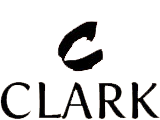 Building good credit in college is one of the best financial moves students can make. Having good credit allows them to qualify for loans, rental applications, auto insurance, phone plans and can help them get a job. Being responsible with credit is the best way to establish and improve a credit score. For college students without much credit history, there are small but important steps they can take to build up their score. Obtaining a Student Credit Card Some credit cards are marketed to students and others who don’t have much borrowing history. Federal laws restrict issuing credit cards to anyone under 21 unless the applicant has the independent ability to repay debt or has an adult co-signer who accepts joint liability for the account. Student credit cards may have low credit limits, such as $1,000, but they are otherwise indistinguishable from other credit cards. They may even have features such as cash back, no annual fees and budget management tools. Using Credit Cards Wisely After getting a credit card, students can start using it slowly and for occasional, small purchases that can be paid for on time. This will help build credit history and help them stay out of debt. Students shouldn’t let a new card sit in their wallet. They must use it or risk the bank closing it due to inactivity. Putting small, recurring charges on it, such as a Netflix account or other website subscription, is an easy way to maintain use at a low cost. Students shouldn’t make any big purchases unless it’s an emergency. Having low debt levels on their credit card will allow them to have enough of a credit line available in an emergency, and will increase the credit utilization part of their credit score. Building Credit With Student Loans One of the last things college students want is to default on their student loans, as this affects credit. Borrowers should make at least the minimum payment each month and do it on time. They should borrow only what they need to go to school, instead of using the funds to buy a car or dine out. Once they graduate, they may want to consolidate their student loans to get a better interest rate. On-time payments and paying off student loans will improve the credit score over time. If students run into problems making payments, they should contact their student loan provider and ask for forbearance. Federal student loans also offer Income-Driven Repayment plans that base payments on a borrower’s income. It may seem like there’s always something going on as a homeowner, from silencing a squeaky hinge to unclogging a temperamental toilet. But many household problems can be easily fixed without calling a repair service.
A can of WD-40, a toilet plunger and a bottle of vinegar are great basics to keep on hand for easing sticky fittings, clearing the toilet and making short work of common stains. Here are some simple fixes for common home problems that even the non-handy can handle: Squeaky Floorboard Banish that annoying squeak by sprinkling a little talcum powder over the noisy area and brushing it into the cracks. Stained Tub Removed stubborn stains by combining equal amounts of cream of tartar and baking soda with enough lemon juice to make a paste. Rub the mixture into the stain with your fingers or a soft cloth. Let sit for a half hour, then rinse well with water. Stuck Sliding Windows Loosen stuck windows by spraying a little silicon spray lubricant (found at hardware stores) onto a rag, then wiping along the tracks, whether metal, wood or plastic. Dry and Worn Cutting Board Revive a worn board by warming a bottle of mineral oil (available at drugstores) in a bowl of hot water, then wiping the oil onto the surface with a soft cloth. Wipe off the excess four to six hours later. Scuffed Linoleum Take care of scuff marks by rubbing the spot with white toothpaste and a dry cloth, or spraying WD-40 on a towel and rubbing lightly. Later, degrease the area with liquid dishwashing soap and water. Poor Toilet Flush Before you call a plumber, look for the water valve behind the toilet, on the wall or the floor. Turn it counter-clockwise as far as you can. Once it’s fully open, the tank will get its optimal water fill and power up your flush. Torn Window Screen If tiny tears are letting bugs in, apply clear nail polish to any tiny holes. For larger rips or tears, look for new and effective screen repair patches at the hardware store.  For $600 or so a year, plus a service fee of around $75 every time you ask for repair, a home warranty can be an inexpensive way to have peace of mind as a new homeowner. Home warranties cover breakdowns in a home, from HVAC systems to appliances. A broken water heater can be repaired within hours, but if it can’t be fixed, a home warranty can pay for a new one to be installed. For homeowners with an older house, they may want more things covered than a newer home would need—such as older appliances—and will likely pay more for it. If you just bought new appliances and have a manufacturer’s warranty for a year or more, you won’t need this coverage. You may be able to exclude new appliances from a home warranty to cut down on costs. Things that can be covered by a home warranty include ductwork, electrical, plumbing, dishwashers, refrigerators, ovens, stoves, clothes washers and dryers, and water heaters. Things that are unlikely to be covered include expensive items such as septic tanks, wells, heating systems, pools, garage doors, windows and doors, sprinkler systems, pre-existing conditions, and walls. Coverage for such items may cost more. Roofs may also be exempt, though some home warranty companies sell plans to fix leaking roofs. Consider Cost A big factor in deciding if a home warranty is worth buying is cost. Basic coverage can start at about $300 and go up to $600 or more. Some home warranties charge for a service call, such as $75 or so, while others allow unlimited service calls. Contractors are screened and sent out by the company. To determine if a home warranty cost is worth it, start by learning how old your appliances and home systems are and if the original equipment manufacturer warranties still cover them. Find out what the expected lifespan of each item is to help you figure out if a home warranty is needed. Some home warranty companies require annual maintenance on appliances and home systems to keep the warranties valid. Some may ask how long you’ve had them. Don’t expect the home warranty company to pay for the annual maintenance of your appliances or home systems. Read the contract carefully to make sure that old appliances are covered in the home warranty. Some don’t cover old appliances, such as anything more than 10 years old. Any home, whether old, new or somewhere in between, will have things break sooner or later. Appliances and home systems only last so long. For $50 a month or so, a home warranty can provide peace of mind when things eventually fail. While world peace is a great idea, if you want to add a touch of calm to your life, begin with your bedroom. Your room isn’t merely the place to rest your head, it’s where you wake, and the vibe of your room can set the tone for the rest of your day. Below are five tips for bringing a peaceful vibe to your bedroom.
Choose calming colors. While red or orange may be your favorite fiery hue, when picking shades for your room, choose soothing, calm colors like light blue or a gentle gray. Pick minimal patterns. Keep the fun, funky patterns for the living room throw pillows. Busy patterns can make us feel crowded and overwhelmed, so minimize zany patterns in your sleep space. Clear the room of clutter. Create a sanctuary in your bedroom by keeping it clear of clutter, from laundry to oversized furniture. Spend a few minutes before bed each day storing any items you pulled out, close the closet doors, put the books back on the shelves and dive into bed with a clear head and space. Bring in nature. Houseplants can boost mood and pump more oxygen into the room. Choose a few easy-to-care for plants, like a fern or a ficus, and place them where you can see them when you wake. Select the right lighting. While blackout shades can be great for blocking disruptive light, it can also negatively impact your sleep patterns by keeping your body from waking at its natural time. Find a set of blackout curtains that filter light but allow you to wake in the morning naturally.  Opening mail from your credit card company is never fun. If it isn’t a bill or marketing letter, it’s often an update to the terms of the credit card agreement, including changes to the annual percentage rate, or APR, that determines the interest rate paid on revolving balances. Credit card interest rates are tied to the benchmark rate set by the Federal Reserve, so if you’re paying attention to what the Fed does then you might get an idea of upcoming increases. Or if you wait to receive a letter from your credit card company, the notification will usually come 45 days in advance, giving you at least one billing cycle to pay down your balance or find a better credit card. When You Won’t Be Notified However, you may not get such explicit notice if you incur a penalty APR for missing payments. The APR increase is immediate and is explained in the terms and conditions you originally received with the card. The contract will also list how you can get back to the original interest rate. Promotional rates are for a fixed period and you likely won’t get notified of when they’ll end. If your APR is variable and tied to interest rates set by the Fed, then you may also not be notified early. Your credit card company may notify you anyway, but it isn’t required. What to do About a Rate Hike If you receive a credit card rate increase notice, your best solution is to ask the bank to lower your rate. It just takes a phone call and can often get you a reduction if you have good credit history and always make payments on time. You can also shop around for a better credit card elsewhere—be sure to let your bank know of better offers that it should at least match. If you have a large balance, a balance transfer card can help you avoid the higher interest rate that’s coming soon. Balance transfer cards often offer 0-percent interest for a year or so, giving you time to pay it off before having to pay interest. The best solution is to pay your credit card balance in full each month to avoid paying interest. Not carrying a balance is one of the best things you can do to raise your credit score. |
Isaac Conde
305 West Moana Street Suite C Reno, NV 89509 775-553-8805 B.S. 0143661 ROI
All
|
305 West Moana Street
Suite C
Reno, NV 89509
775-553-8805
B.S. 0143661
Suite C
Reno, NV 89509
775-553-8805
B.S. 0143661




 RSS Feed
RSS Feed


